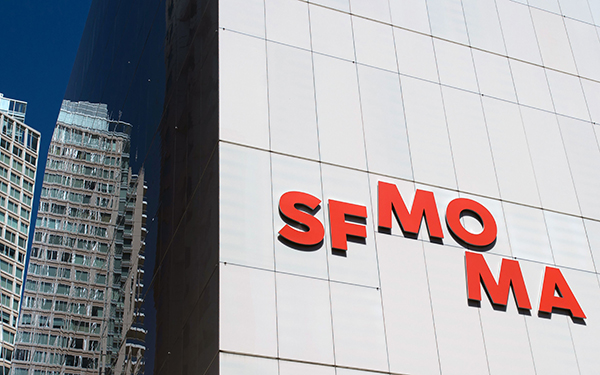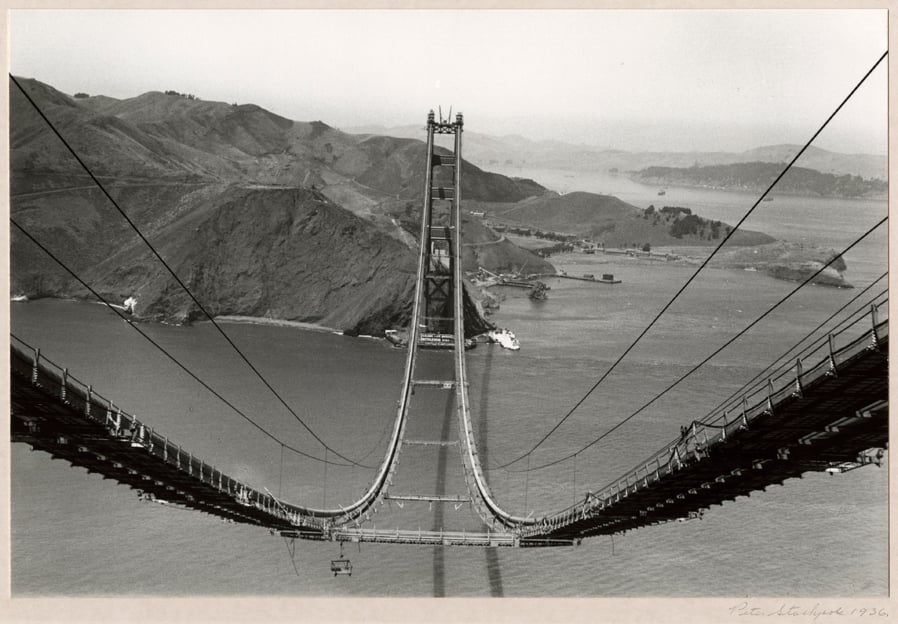Art & Exhibitions
Big Things in Store for Newly-Expanded San Francisco Museum of Modern Art
A new chapter in the storied institution's history.

A new chapter in the storied institution's history.

The art world will turn its eyes to the San Francisco Bay Area in May, as the San Francisco Museum of Modern Art (SFMOMA) unveils its renovated and dramatically expanded building, the result of a three-year, $610-million campaign. The overhauled facility boasts some 460,000 square feet of exhibition space, up from 225,000, making it by far the largest art museum in the Bay Area.
The expansion was partly occasioned by a huge gift from Doris and Donald Fisher, founders of the clothing chain Gap Inc., of their 1,100-piece collection. On the occasion of the expansion, other donors have given or promised the museum nearly 2,000 works by artists including Pablo Picasso, Jasper Johns, Ed Ruscha, Diane Arbus, and Robert Rauschenberg.

The San Francisco Museum of Modern Art viewed from Yerba Buena Gardens. Courtesy the San Francisco Museum of Modern Art, © Henrik Kam.
The expansion is courtesy of Norwegian architecture giant Snøhetta, the firm behind projects like the National 9/11 Memorial Museum Pavilion and the reconstruction of Times Square, as well as art museums and museum exhibition designs including a series of shows at Oslo’s Munch Museum.
San Francisco has been without its flagship art museum for three long years during renovations, which were so extensive that they necessitated the highly unusual step of closing the museum completely. In order to remain in the public eye in the interim, SFMOMA has held exhibitions in conjunction with other institutions throughout the Bay Area, and held several large-scale public art installations.

The San Francisco Museum of Modern Art’s new extension at night. Courtesy the San Francisco Museum of Modern Art, © Henrik Kam.
The addition has risen behind the museum’s existing home, a 1988 design by Mario Botta. The original design, the Swiss-Italian architect’s first in the US, beat out proposals from the likes of Frank Gehry and Tadao Ando, and helped revitalize the then run-down SOMA (South of Market) neighborhood.
The most striking feature of Botta’s building, a circular black-and-white-striped turret/oculus projecting from the roof, remains the focal point when the museum is viewed from nearby Yerba Buena Gardens. A rippling white facade comprising over 700 panels creates a dramatic vista from the new Howard Street entrance.

Peter Stackpole, photo of the Bay Bridge during its construction (1936). Courtesy of the Oakland Museum of California Museum Technology Initiative for Educational Outreach.
Founded by the San Francisco Art Association in 1935, the San Francisco Museum of Art, as it was originally known, was the group’s second attempt at establishing a city art museum, and the institution was ambitious from the start. As recounted by Eli Wolfe in the San Francisco Chronicle, one of the first exhibitions involved shipping the entire 1934 Carnegie International exhibition across the country from Pittsburgh, Pennsylvania’s Carnegie Museum of Art.
Prior to the outbreak of World War II, inaugural director Grace McCann Morley’s politically charged “Twentieth Century German Art (Banned)” exhibition in 1939 highlighted works deemed degenerate by the Nazis. She also organized the first solo museum exhibition for none other than Jackson Pollock in 1945, about the time that he would hit upon his trademark drip technique.

The San Francisco Museum of Modern Art. Courtesy the San Francisco Museum of Modern Art, © Henrik Kam.
Morley was an early adopter of photography at the museum level, championing Ansel Adams and Alfred Stieglitz, and hosting an exhibition of Peter Stackpole’s photos of the Bay Bridge the same year the museum opened. When it reopens, SFMOMA will devote most of its third floor to the John and Lisa Pritzker Center for Photography, the largest photography exhibition space in the country.
Other pioneering artworks shown at the museum throughout its history include Snowjob, an experimental performance in which Bonnie Sherk transported two tons of snow to the streets of San Francisco, under the tenure of director George Culler. The museum also exhibited Jay DeFeo‘s now-iconic sculpture/painting The Rose and the controversial “Contemporary Black Artists,” both in 1969, when Gerald Nordland was director.

Richard Serra, Sequence at the San Francisco Museum of Modern Art. Courtesy the San Francisco Museum of Modern Art, © Henrik Kam.
The museum added the word “modern” to its name in 1975 under director Henry Hopkins, who displayed Judy Chicago‘s massive feminist sculpture The Dinner Party, which pays tribute to historic women, in 1979, and established the museum’s photography department.
Early reviews are highlighting the Alexander Calder mobile in the atrium, Richard Serra’s monumental steel sculpture Sequence, and a living wall from habitat Horticulture on the third floor terrace and sculpture garden. Keep an eye out for a dispatch from artnet News national art critic Ben Davis, coming later today.
The San Francisco Museum of Modern Art reopens May 14, 2016.